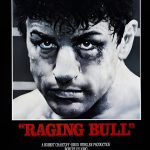“Enter the Dragon 1973”
- movieslovers
- November 13, 2024
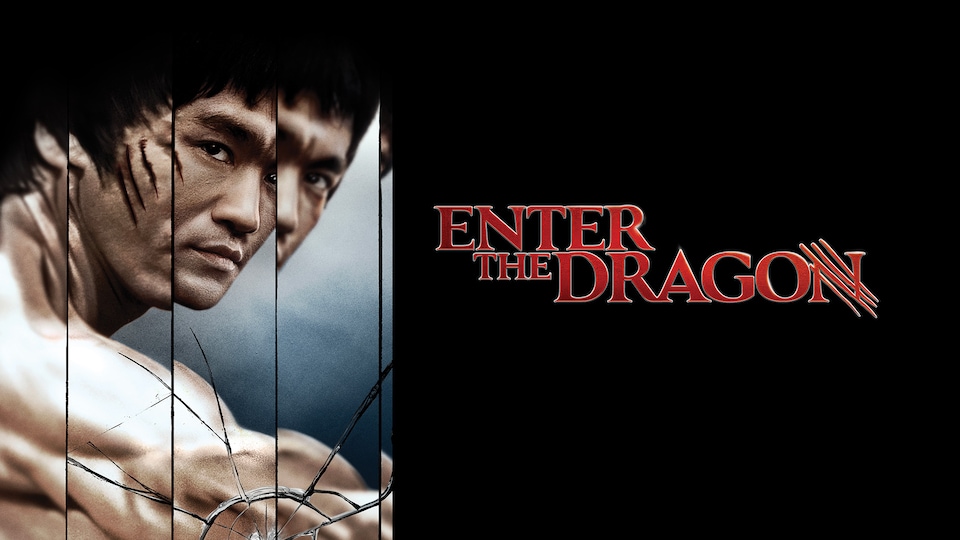
“Enter the Dragon” (1973) is a landmark martial arts film directed by Robert Clouse and starring Bruce Lee in his final completed film role before his untimely death. Widely regarded as one of the greatest martial arts films of all time, Enter the Dragon helped popularize martial arts and martial arts cinema worldwide, becoming an iconic action film and solidifying Bruce Lee’s status as a global superstar. The film blends thrilling action, espionage, and drama with Lee’s unparalleled martial arts prowess, creating an unforgettable cinematic experience.
Plot Summary
The film follows Lee, a highly skilled martial artist who is recruited by a British intelligence agency to infiltrate a private island compound run by Han (Shih Kien), a crime lord and martial artist. Han is suspected of being involved in illegal activities, including drug trafficking, prostitution, and the operation of a fighting tournament that attracts fighters from around the world. Lee’s mission is to gather information on Han’s criminal activities and bring him to justice, but he is also motivated by personal revenge, as Han was responsible for the death of his sister.
Lee is sent undercover to Han’s island, where the martial arts tournament is being held. While on the island, Lee befriends two other competitors: Roper (John Saxon), a professional gambler with a past, and Williams (Jim Kelly), a martial artist and former CIA operative. The three men are drawn into a web of intrigue as they uncover the true nature of Han’s operations, with Lee having to face his inner demons and seek revenge for his sister’s death.
As Lee competes in the tournament, he uncovers the dark and twisted secrets of Han’s island, eventually leading to a final confrontation with the villainous crime lord. The film culminates in an epic showdown between Lee and Han, with Lee using his unmatched martial arts skills to defeat his enemies and expose Han’s criminal empire.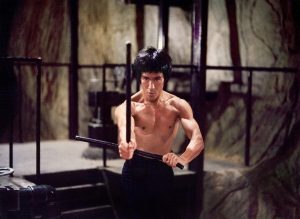
Key Themes
- Revenge and Justice: The theme of revenge is a central motivator for Bruce Lee’s character, whose quest for justice drives him to take on dangerous tasks in order to avenge the death of his sister. Throughout the film, Lee must confront his personal motivations and balance his need for revenge with his greater mission to expose Han’s criminal empire.
- Honor and Integrity: Lee’s character is presented as a figure of honor, discipline, and integrity. His martial arts skills are not just about fighting but about upholding principles of respect, fairness, and self-control. In contrast, Han’s empire operates on deceit, corruption, and cruelty, making Lee’s moral compass a key element of the story.
- The Power of Martial Arts: The film highlights the philosophy of martial arts as a form of self-expression and personal growth. Lee’s fighting style is depicted not only as a means of combat but also as a way of life, reflecting his own beliefs about discipline, inner strength, and self-mastery.
- Cultural Clash: Enter the Dragon explores the contrast between Eastern and Western cultures, particularly through Lee’s character. Lee, a martial artist from Hong Kong, finds himself working alongside Western characters, such as Roper and Williams, in a mission that blends espionage with the ancient traditions of combat. The film was one of the first major crossover hits that brought Asian cinema to a broader international audience.
- Espionage and Crime: The film also incorporates elements of espionage and crime thriller, with Lee acting as an undercover agent to bring down a criminal organization. This subplot adds a layer of intrigue and suspense to the film, distinguishing it from typical martial arts films and giving it a broader appeal.
Character Development and Performances
- Bruce Lee as Lee: Bruce Lee’s performance is the heart and soul of Enter the Dragon. As the protagonist, Lee embodies strength, agility, and charisma, all while maintaining an intense emotional depth. His physicality is matched by his internal struggle for justice and redemption, making his character not only a martial arts hero but a man driven by deep personal convictions. Lee’s philosophy, discipline, and natural charisma made him a cultural icon, and this film solidified his legacy.
- John Saxon as Roper: Roper, played by John Saxon, is a charming, morally ambiguous character with a knack for gambling and a checkered past. He becomes one of Lee’s allies on the island and provides a contrast to Lee’s more disciplined and focused nature. Saxon’s performance balances humor and toughness, adding an interesting dynamic to the team.
- Jim Kelly as Williams: Jim Kelly plays Williams, an African American martial artist and former CIA operative. Williams is portrayed as cool, confident, and highly skilled, with a strong sense of personal honor. Kelly’s performance adds another layer of diversity to the film, and his martial arts skills and on-screen presence became iconic in their own right.
- Shih Kien as Han: Shih Kien’s portrayal of Han, the villainous crime lord, is chilling and memorable. Han is a master of martial arts, but his ruthless and cold-blooded nature makes him a perfect antagonist for Lee. Kien’s portrayal of Han as a calm, calculating figure adds an intellectual layer to the character, making the eventual showdown between him and Lee even more compelling.
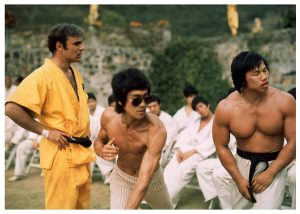
Fight Choreography and Action Sequences
The fight choreography in Enter the Dragon is one of the film’s defining features. Bruce Lee’s martial arts expertise is on full display, with his fluid, precise movements and lightning-fast reflexes creating a stunning visual spectacle. The film features several memorable fight scenes, including Lee’s one-on-one battles with other fighters in the tournament, as well as his final confrontation with Han.
One of the most iconic sequences is the hall of mirrors fight, in which Lee faces off against Han’s men in a disorienting, maze-like environment. The use of mirrors and the intense hand-to-hand combat make this sequence a standout in martial arts cinema. Lee’s philosophy of “be like water” is evident in his fighting style—adapting to the environment, using speed and agility to overcome his enemies.
The film’s choreography also showcases Lee’s ability to blend philosophy with action. His movements are precise, fluid, and purposeful, making each fight scene not only visually exciting but also meaningful.
Reception and Legacy
Upon its release, Enter the Dragon became a massive success and helped launch Bruce Lee into superstardom. The film grossed over $90 million worldwide, making it one of the highest-grossing films of 1973, and it continues to be celebrated as one of the greatest martial arts films of all time.
The film was groundbreaking in its approach to combining martial arts with Western action movie tropes, particularly the espionage storyline. It also helped introduce Chinese martial arts to a global audience, and Bruce Lee’s performance became a defining moment in the genre. His legacy as a martial artist, actor, and cultural icon was solidified through this film.
Enter the Dragon has been cited as one of the most influential martial arts films in history, inspiring countless filmmakers and actors, particularly in the action and martial arts genres. It remains a cultural touchstone, revered not only for its exciting action but also for its contribution to the global popularity of martial arts.
Cast and Crew
- Director: Robert Clouse
- Writers: Michael Allin
- Producers: Fred Weintraub, Paul Heller
- Cast:
- Bruce Lee as Lee
- John Saxon as Roper
- Jim Kelly as Williams
- Shih Kien as Han
- Bob Wall as O’Hara
- Angela Mao as Su Lin
- Bolo Yeung as Bolo (one of Han’s henchmen)
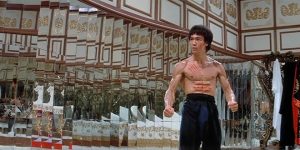
Fun Facts
- Bruce Lee’s Legacy: Enter the Dragon was Bruce Lee’s final completed film before his death in 1973. His untimely passing only cemented his status as a legend, and Enter the Dragon remains his most iconic film.
- Iconic Music: The film’s soundtrack, composed by Lalo Schifrin, includes the memorable opening theme, which has since become synonymous with martial arts cinema.
- Lee’s Fight Choreography: Bruce Lee was also deeply involved in the choreography of the fight scenes, ensuring that they were not just about action but also showcased his philosophy of martial arts.
Conclusion
Enter the Dragon (1973) is a milestone in martial arts cinema, blending thrilling action with deep philosophical themes and unforgettable performances. Bruce Lee’s charisma and skill elevate the film into something much more than just a martial arts movie; it is a cultural phenomenon. The film continues to inspire filmmakers and fans around the world and remains an essential classic in action and martial arts film history.










